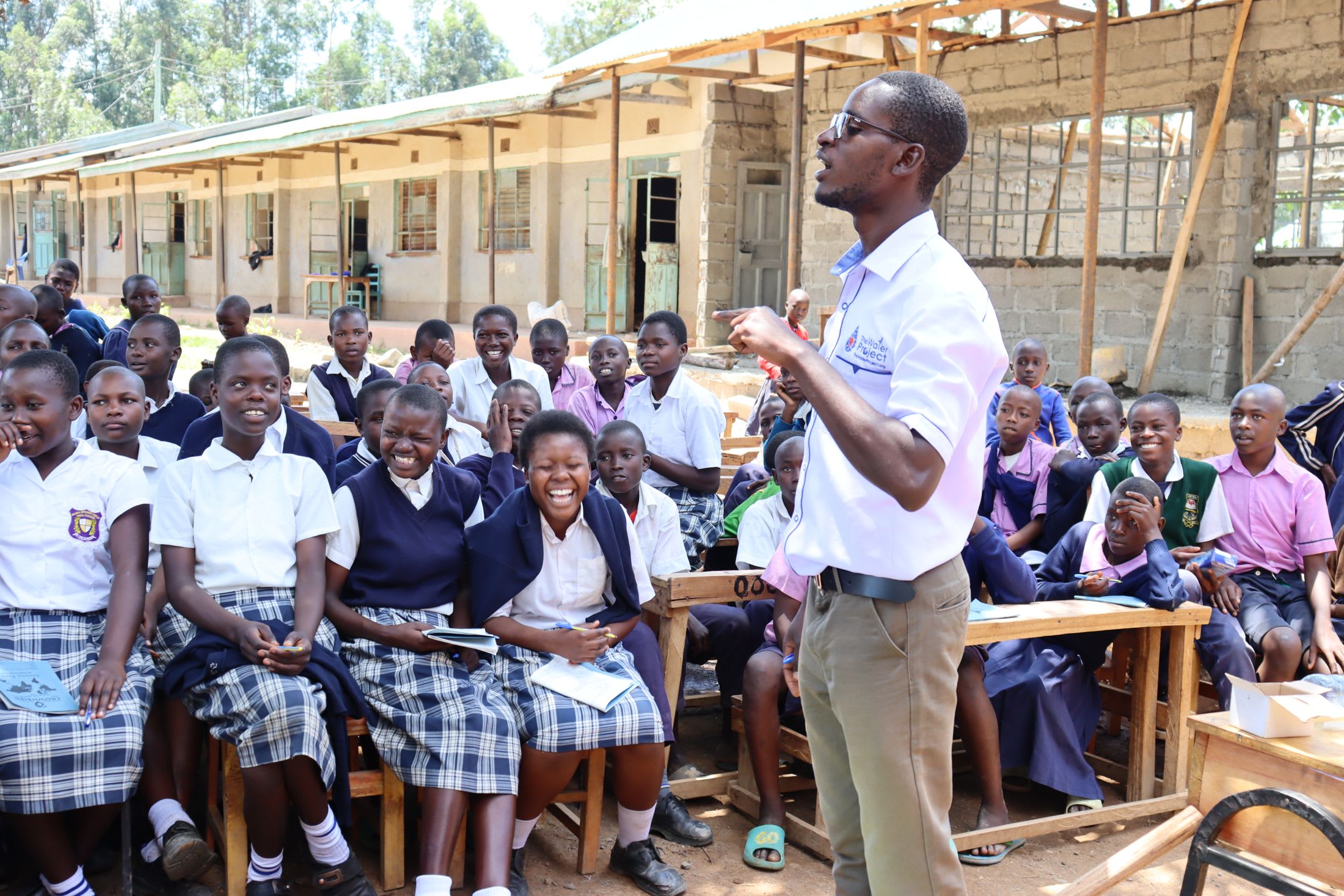The 559 students and 15 St. Augustine Indulusia Primary School staff struggle to access sufficient water. Without adequate water on campus, children are forced to leave school and learning opportunities to travel to a protected spring to collect water. Once there, they must wait in long lines because it is shared with the entire community and then carry it back to school. It's a process that steals a significant portion of their energy each day.

The school has a dug well on campus, though more often than not, it sits dry. When that happens, students must bring water from home, often from unknown sources, putting everyone's health at risk. Even when they bring water from home, it still doesn't meet their needs, so students must travel to the spring.

Field Officer Joel Otuya shared what the water crisis at St. Augustine Indulusia Primary School looks like. "The main water source for Indulusia Primary is a protected spring, which is a bit far from the school. The road leading to this spring is narrow, slippery when wet, and bushy since it passes through maize plantations. It doesn't provide enough water for the school since they also share with community members. Another source of water is a protected protected dug well with a hand pump, and its handle is very loose; the protected dug well itself is very seasonal and lacks water most of the time."
Time used to wait in line at the spring or travel there and back is stolen from time used to learn. When students can't prioritize their education, it affects their day-to-day life and their futures in the long run.

To make matters worse, time isn't the only thing stolen. Students are often ill due to contamination, which uses valuable time to recover from and needed resources from their family's already meager budgets.
13-year-old Faith B, seen below, is well acquainted with the constant struggle. "In February this year, I fell ill from flue (feeling ill from contaminated water) and had to miss school for a week. This made me lag behind in my studies. I also lack drinking water because we are very many students, hence making it chaotic to access it. I waste a lot of time at the spring whenever the teachers send me to fetch water. We are many and have to queue for a very long time, therefore wasting a lot of time."

"Last year, when we asked students to bring water from home, one went further and urinated in a water container and brought it to school. The urine then contaminated water brought by other students. Therefore, we had to send them to fetch water at the spring, hence wasting a lot of time. The same year, I was a victim of [a] jigger infestation due to the dirty state of the classrooms since there is very little water for cleaning. The smell from the latrines is unbearable because they are mostly dirty with little or sometimes no water for cleaning and handwashing," shared 29-year-old teacher Mildred Aoko, seen below.

This school is facing a disheartening challenge. They sacrifice time and health to collect water, that is never enough. Without clean, easily accessible water, their futures are at risk.
Installing the well will enable students like Faith to spend their time learning, hopefully reducing their risk of waterborne illnesses. Teachers like Mildred will be able to give their students a cleaner, healthier learning environment, and hopefully, the time wasted waiting for water will be regained for a brighter future.
Water at schools is unique, which is why we need unique solutions.
The Proposed Solution, Determined Together...
At The Water Project, everyone has a part in conversations and solutions. We operate in transparency, believing it benefits everyone. We expect reliability from one another as well as our water solutions. Everyone involved makes this possible through hard work and dedication.
In a joint discovery process, community members determine their most advantageous water solution alongside our technical experts. Read more specifics about this solution on the What We're Building tab of this project page. Then, community members lend their support by collecting needed construction materials (sometimes for months ahead of time!), providing labor alongside our artisans, sheltering and feeding the builders, and supplying additional resources.
Water Access for Everyone
This water project is one piece in a large puzzle. In Kenya, Sierra Leone, and Uganda, we're working toward complete coverage of reliable, maintained water sources that guarantee public access now and in the future within a 30-minute round trip for each community, household, school, and health center. One day, we hope to report that this has been achieved!
Training on Health, Hygiene & More
With the community's input, we've identified topics where training will increase positive health outcomes at personal, household, and community levels. We'll coordinate with them to find the best training date. Some examples of what we train communities on are:
- Improved hygiene, health, and sanitation habits
- Safe water handling, storage & treatment
- Disease prevention and proper handwashing
- Income-generation
- Community leadership, governance, & election of a water committee
- Operation and maintenance of the water point
Handwashing Stations
Alongside each water source, we also provide two new gravity-fed handwashing stations that will allow everyone at the school to wash their hands without running water. Handwashing is so important to help prevent future water-related illnesses in the school community.
The student health club will maintain the stations, fill them with water, and supply them with soap (which we will teach the school community how to make during the training!).
VIP Latrines
In addition, we will construct two triple-door Ventilated Improved Pit (VIP) latrine blocks designed to prevent fecal disease transmission. Each latrine will have a cement floor, which is easy to use and clean regularly. Three doors will serve the girls, and three doors will serve the boys.

 Borehole Well and Hand Pump
Borehole Well and Hand Pump
 Rehabilitation Project
Rehabilitation Project


































